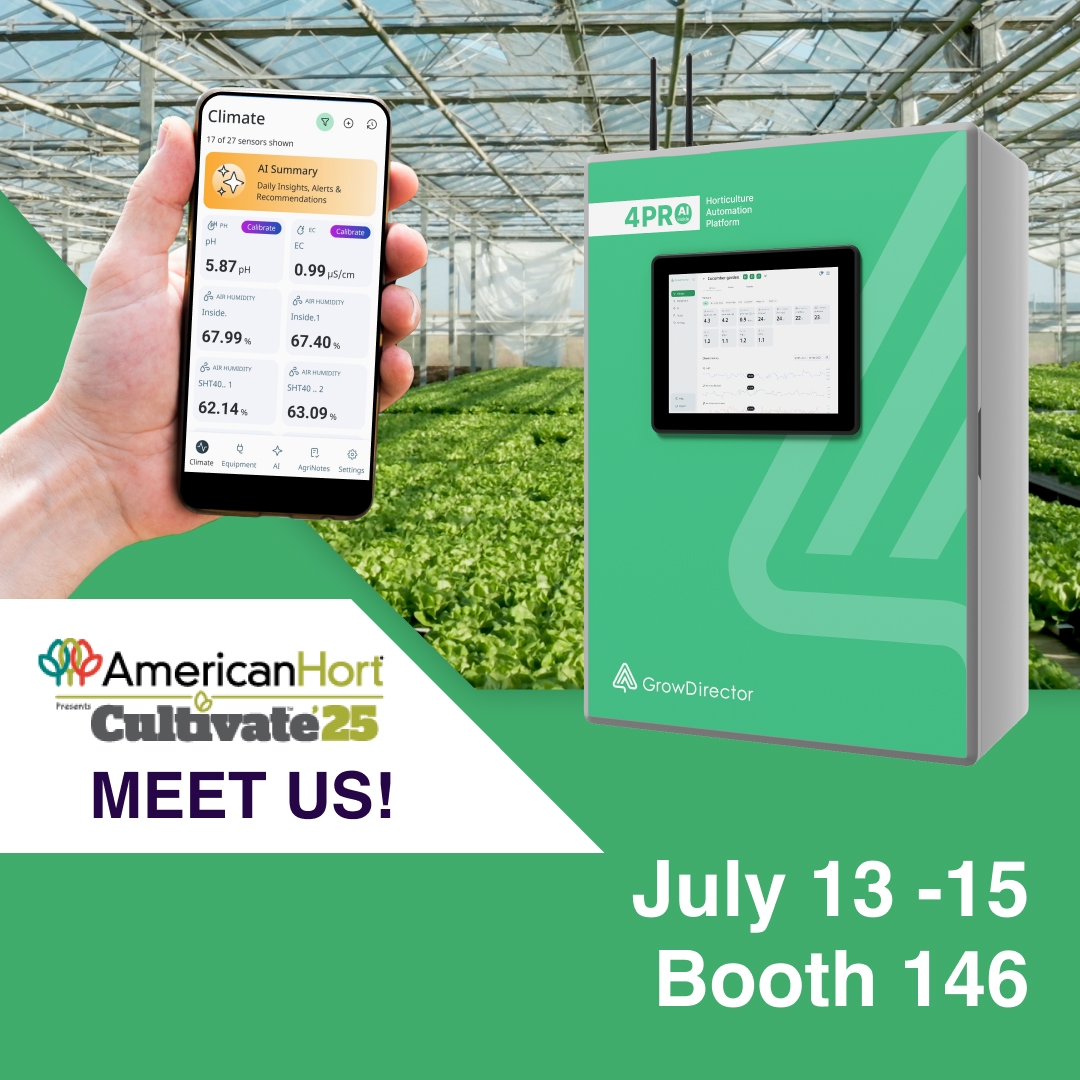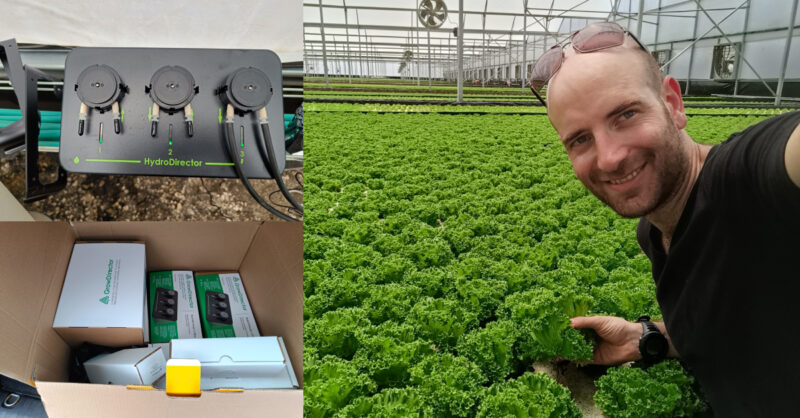
8 Steps to Choose the Perfect Greenhouse Automation for Professional Growers
Greenhouse automation is the use of technology to control the environment in a greenhouse. This can include things like controlling the temperature, humidity, light levels, and irrigation. New technologies can help growers to increase yields, improve quality, and reduce labor costs.
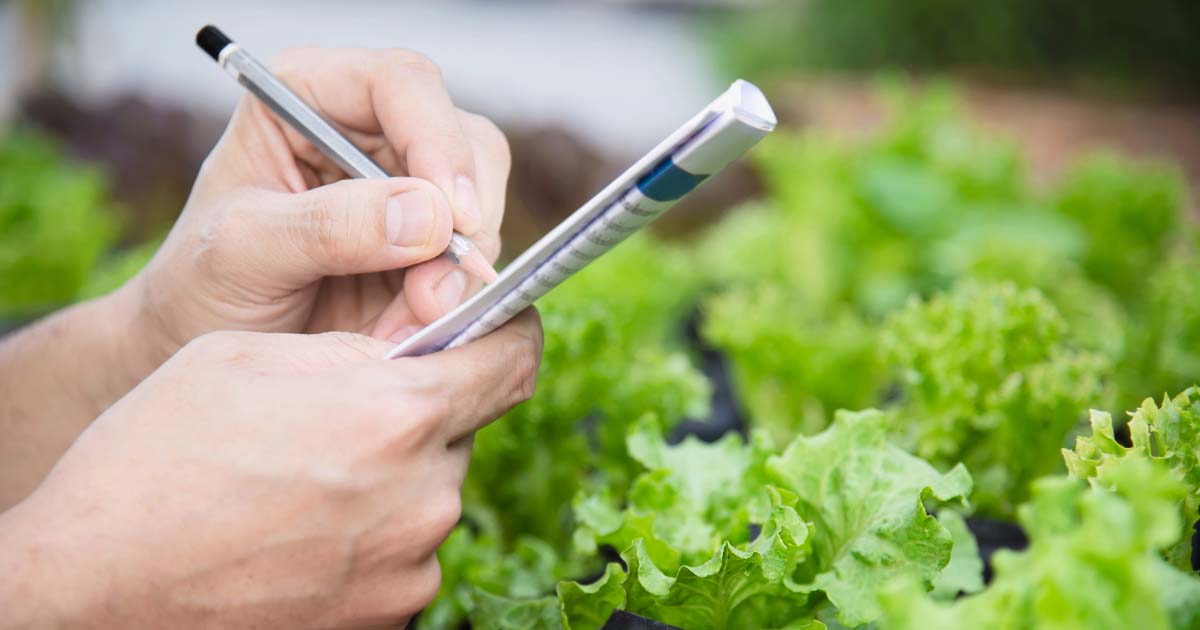
Learn more about how greenhouse automation can help you improve the quality and yield of your crops by visiting our website today!
What are the benefits of greenhouse automation?
-
- Maximized Yields: Precise environmental control leads to optimal plant growth and increased yields, translating to higher profits.
- Enhanced Crop Quality: Consistent and controlled conditions result in superior crop quality, attracting premium prices in the market.
- Reduced Labor Costs: Automation reduces the need for manual intervention, freeing up labor for more strategic tasks.
- Resource Efficiency: Smart automation minimizes water and energy usage, contributing to sustainable and eco-friendly practices.
- Real-Time Monitoring: Stay connected to your growing facility from anywhere, receiving instant alerts for timely responses to deviations.
- Pest and Disease Management: Early detection of pests and diseases allows for proactive measures, preventing crop damage and loss.
- Customization and Scalability: Tailor the system to fit your specific requirements and expand it as your business grows.
- Improved Decision-Making: Access to comprehensive data and analytics empowers growers to make informed and data-driven decisions.
How Automation of Greenhouse is Solving Horticultural Challenges in Different Countries
Automated plant cultivation is being used in different countries to solve horticultural challenges.
For example, in the Netherlands, smart controllers is being used to increase yields and improve quality. The Dutch company Priva has developed a horticulture automation system that uses sensors to monitor the environment and adjust the climate accordingly. This system has helped Dutch growers to increase their yields by up to 20%.
In Israel, new technology is being used to grow crops in a desert climate. The Israeli company GrowDirector has developed an intelligent climate control system for indoor and greenhouse horticulture. This system has helped Israeli growers to save water and increase their yields.
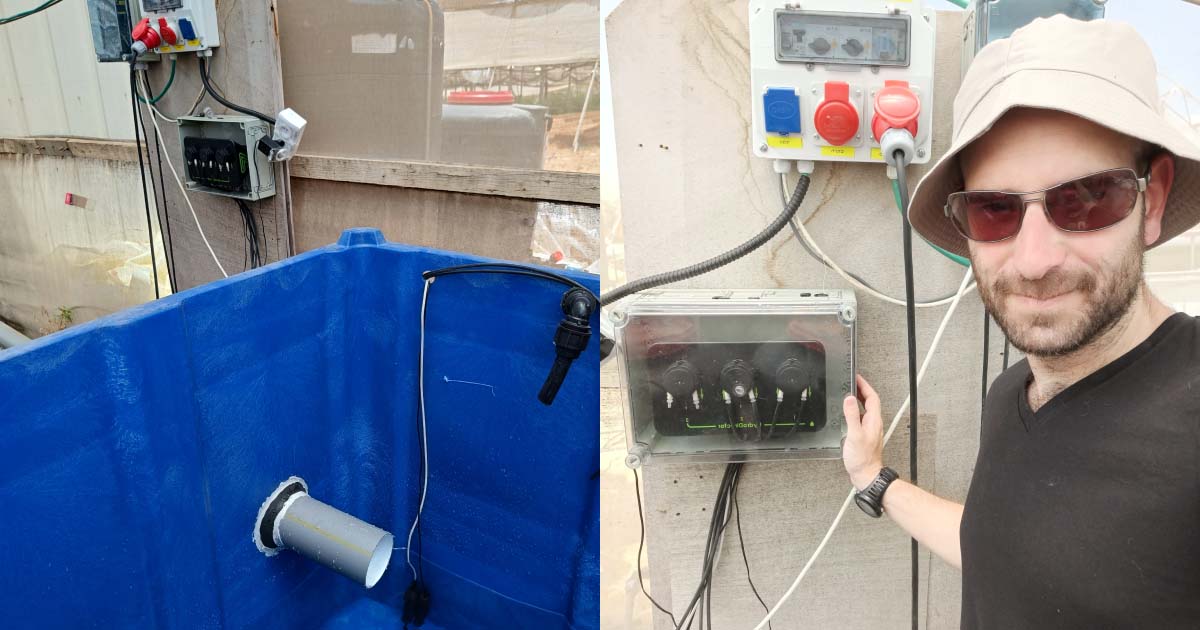
GrowDirector 3 Pro – greenhouse automation that can help you improve your yields, quality, and profitability.
China is the world’s largest producer of vegetables, and automation is playing an increasingly important role in Chinese agriculture. Chinese growers are using smart technologies to control the environment in their greenhouses, which helps them to grow high-quality crops year-round. The Chinese company Goodbaby has developed a system that uses sensors to monitor the environment and adjust the climate accordingly. This system has helped Chinese growers to increase their yields by up to 30%.
How to Choose the Right Greenhouse Automation System for Professional Growers
High-tech horticulture is a powerful tool that can help professional growers to improve their yields, quality, and profitability. However, with so many different systems on the market, it can be difficult to know which one is right for you.

Learn more about how greenhouse automation can help you improve the quality and yield of your crops by visiting our website today!
Key Factors for Choosing Greenhouse Automation Equipment:
-
- Specific Goals: Define your objectives clearly. Determine whether you aim to increase yields, improve crop quality, reduce labor costs, enhance resource efficiency, or achieve other specific goals.
- Greenhouse Size: Consider the size of your growing facility. Smaller greenhouses may not require complex systems, while larger ones may benefit from more sophisticated solutions.
- Crop Type: Different crops have unique environmental requirements. Ensure the automation system aligns with the specific needs of the crops you grow, such as temperature control or specialized irrigation.
- Budget: Set a budget for the automation system. Balance your desired features and capabilities with the financial resources available.
- System Features: Evaluate the features of the automation system. Look for capabilities like real-time monitoring, pest and disease detection, remote accessibility, and scalability.
- Ease of Use: Opt for an intuitive and user-friendly system, especially if you have a small team or limited technical expertise.
- Reliability: Choose a system with a proven track record of reliability and minimal maintenance requirements.
- Customer Support: Select a provider that offers excellent customer support, ensuring assistance when needed.
Smart Systems Available on the Market:
GrowDirector 3 Pro: This system is designed for professional growers and can monitor plants for pests and diseases, control the temperature, humidity, and light levels in a greenhouse, and automatically water and fertilize plants.
Argus Control System: It is also designed for professional growers and can monitor plants for pests and diseases, control the temperature, humidity, and light levels in a growing facility, and automatically water and fertilize plants.
GrowLink system: This one is for smaller growers and can monitor plants for pests and diseases, control the temperature and humidity, and automatically water plants.
Lets compare greenhouse automation software:
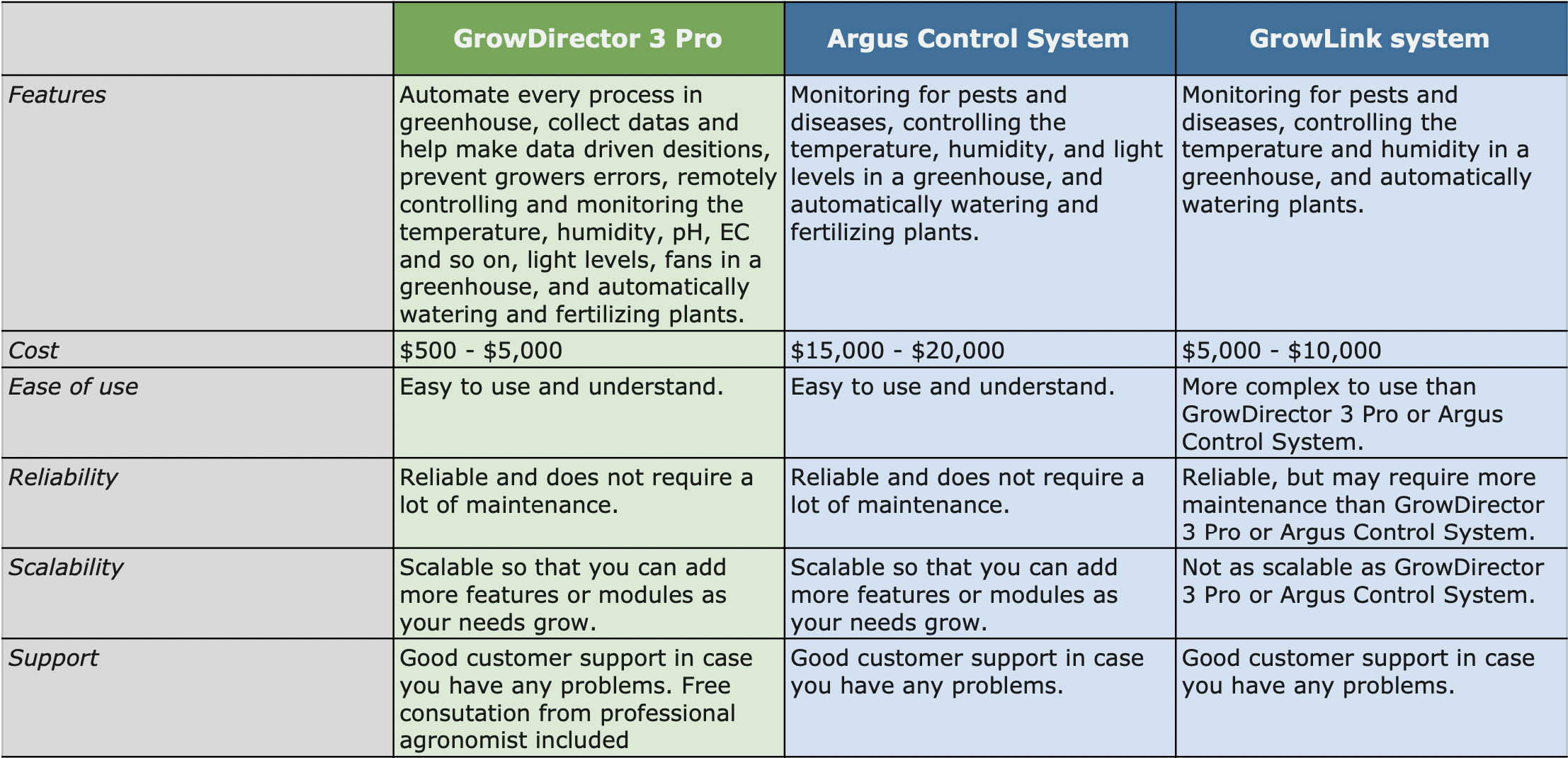
Comparison of Three Greenhouse Automation Systems
Tips for professional growers:
- Start small: If you’re new to automated horticulture, it’s a good idea to start small. You can always add more features or modules to your system later on.
- Get professional advice: If you’re not sure what type of system is right for you, it’s a good idea to get professional advice. A professional agronomist can help you assess your needs and recommend a system that’s right for you.
- Be prepared to invest: Controllers can be a significant investment, but it’s important to remember that it can save you money in the long run. By automating tasks such as watering and harvesting, you can free up your time to focus on other things, such as marketing and sales.
With careful planning and execution, smart controllers can be a valuable tool for professional growers who want to improve their yields, quality, and profitability.
The Future
The future of precision greenhouse management is bright. As technology continues to advance, greenhouse automation will become more sophisticated and affordable. This will make it possible for even small-scale growers to benefit from the advantages of smart equipment.
Greenhouse automation is a valuable tool for growers who want to increase yields, improve quality, and reduce labor costs. By choosing the right system and using it effectively, growers can improve their bottom line and achieve their production goals.

